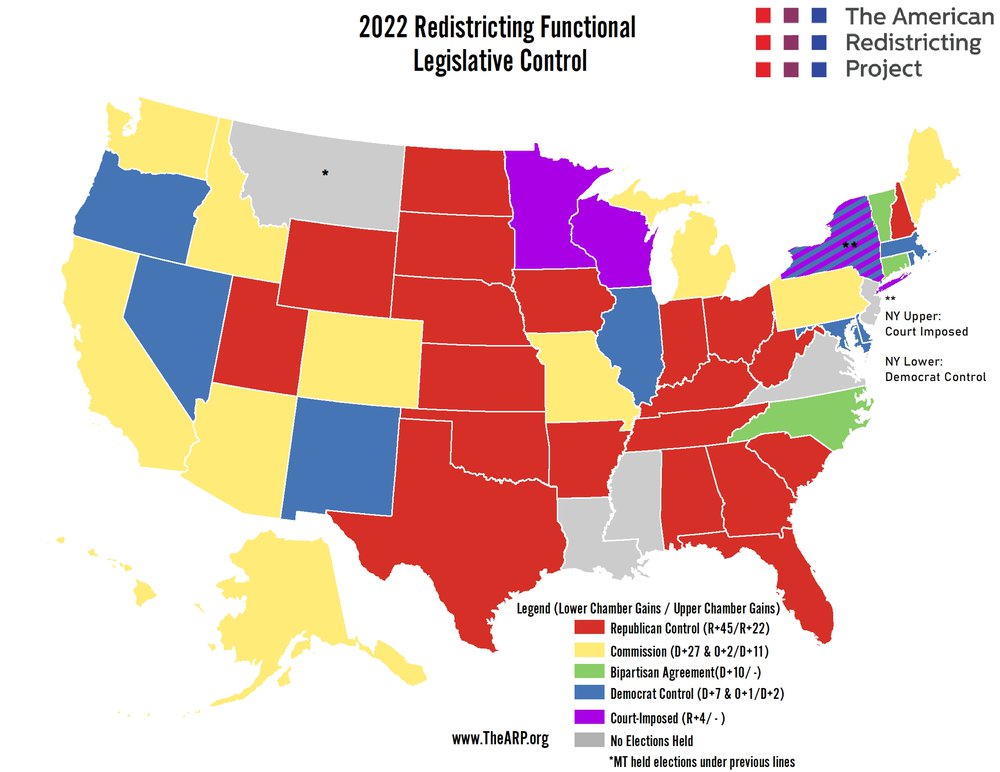
The 45 states with State Legislative elections under new lines had starkly different partisan outcomes between February 2021 & December 2022.
States are grouped into five control categories: Republican, Democrat, Commission, Bipartisan compromise, and Court-imposed maps. States controlled by Republicans had the largest partisan gains following redistricting while court-implemented plans had the least amount of change. Perhaps unsurprisingly, states using Commissions to enact maps had similar Democrat electoral wins as states with total Democratic control.
For more information on historical, congressional, or individual state processes regarding Redistricting Control, please visit the State Profiles and our previous control posts .
Bipartisan Agreement
State House Seat Changes: D+12
State Senate Seat Changes: D+2
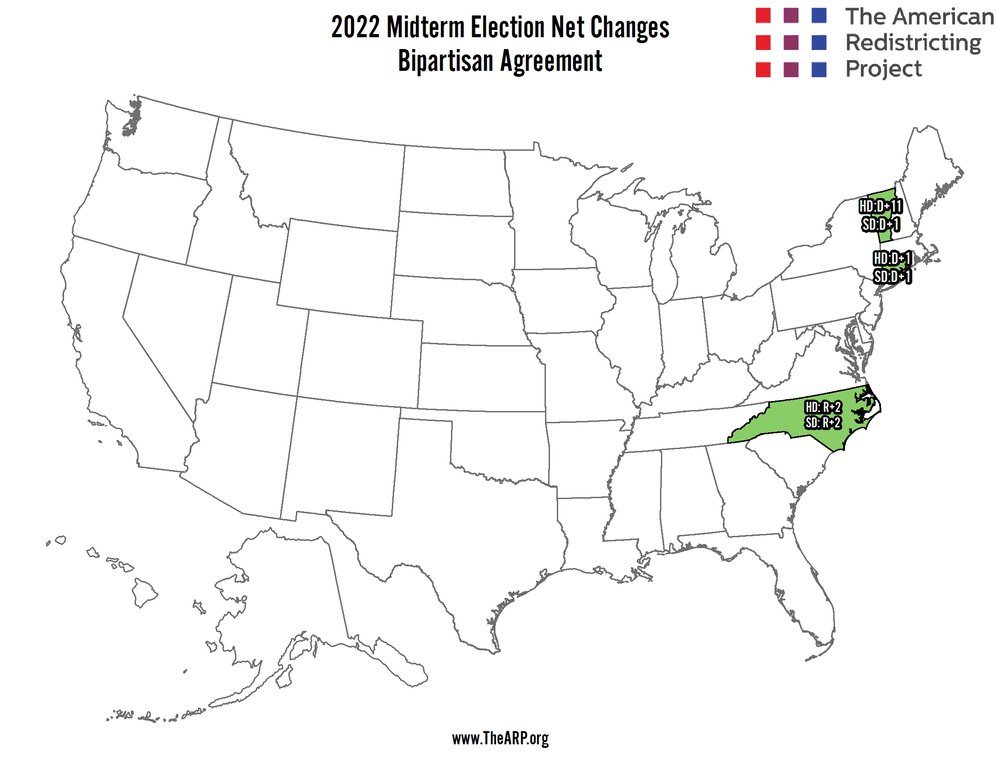
Vermont, Connecticut, and North Carolina were the only states that reached bipartisan agreements. Vermont’s Democratic controlled legislature and Republican governor reached an agreement on a new map that ultimately yielded an even larger majority for Vermont Democrats. In Connecticut, Democratic and Republican politicians agreed to a least changes map that resulted in Democrats picking up a single seat in each chamber. Meanwhile in North Carolina, the North Carolina Supreme Court’s actions in Harper v Hall forced the North Carolina Legislature to create a bipartisan map that lead to small Republican gains.
Court Imposed Maps
State House Seat Changes: R+4
State Senate Seat Changes: None
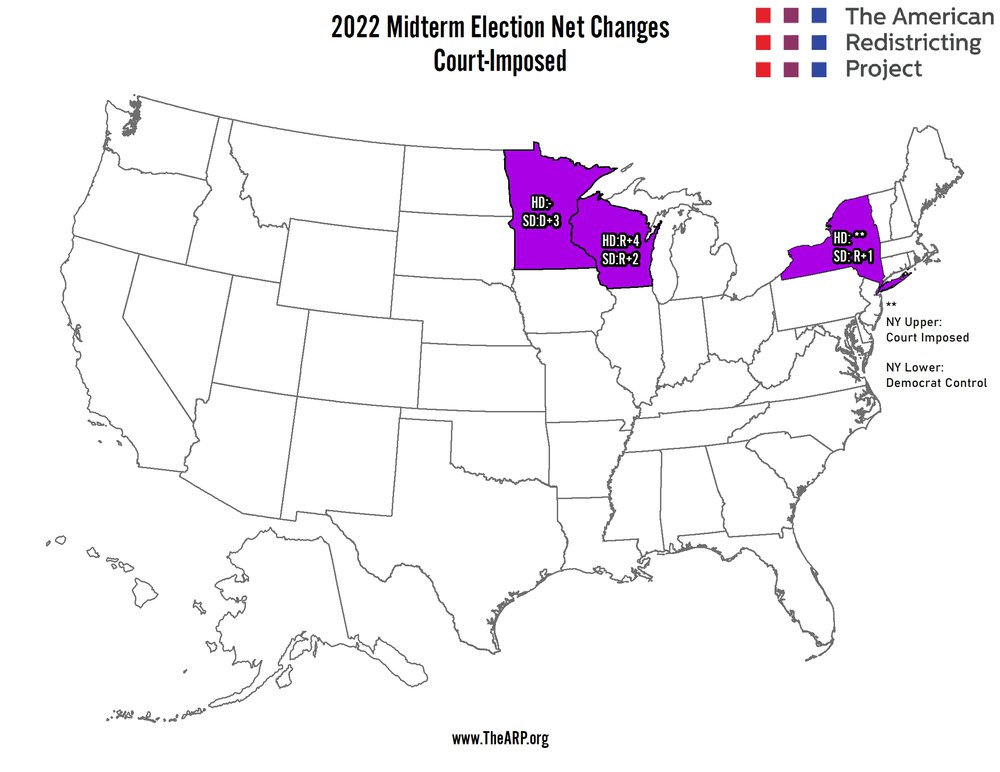
State courts in Minnesota, New York, and Wisconsin all implemented maps due to partisan impasses. New York was a unique scenario in which the court appointed a special master to draw the Senate maps, but allowed the State Assembly maps to stay in place for 2022. (Read more about New York’s Redistricting Saga with Behind the Lines). These maps had minor partisan changes.
Democrat Control
State House Seat Changes: D+7 & O+1
State Senate Seat Changes: D+2
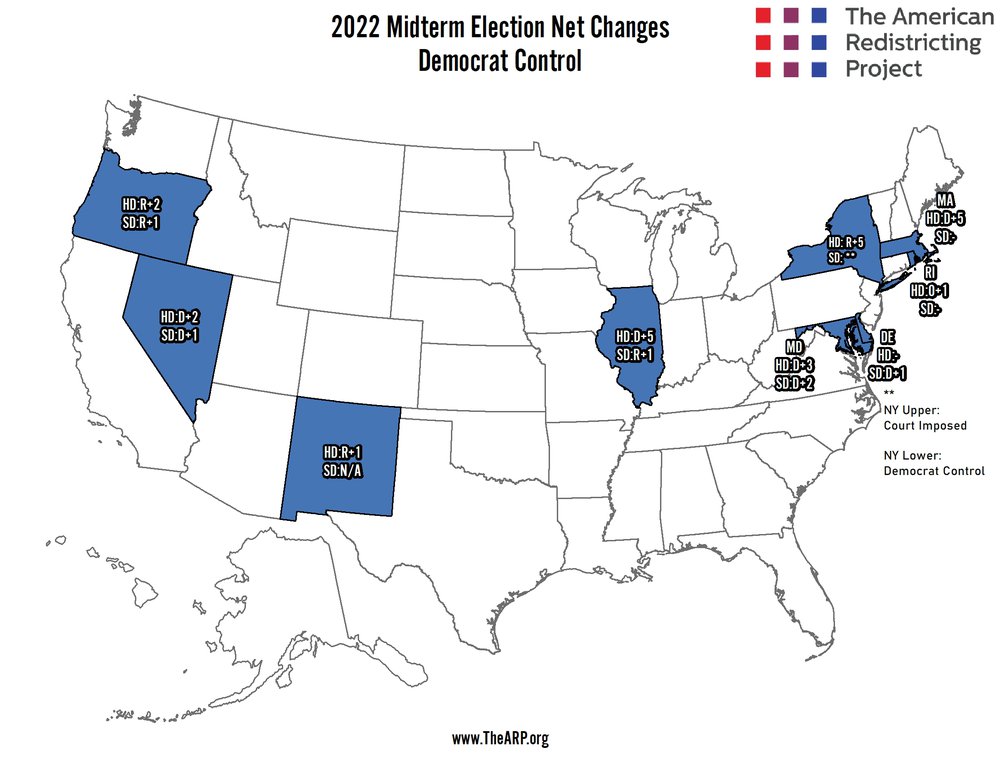
Democrats were in the driver’s seat for legislative redistricting in these states. Democrats lost seats in five chambers where they had outright control. Republicans gained in the Illinois Senate, the New York Assembly, the New Mexico House, and in both chambers in Oregon. Democrats’ largest returns came in the Illinois House and the Massachusetts House where they gained five seats each. Pre-existing Democrat majorities also marginally expanded in Nevada and Maryland.
Independent Commission Control
State House Seat Changes: D+27 & O+2
State Senate Seat Changes: D+11

These states all have “Independent” Redistricting Commissions in an attempt to “remove politics from redistricting” however, the commission states delivered more new seats to Democrats than the maps drawn by the actual Democrats. Michigan and Colorado are both states that newly switched to the “Independent” Commission Model which delivered a bounty of seats to the democrats. Pennsylvania’s new State House map netted 12 seats for Democrats, the largest single chamber increase across the entire country. Even overlooking the gains in those states, the Commission States had a clear bias for democratic seats.
*Montana does have a Legislative Redistricting Commission, the plans approved by the commission will not be used until the 2024 elections.
Republican Control
State House Seat Changes: R+45
State Senate Seat Changes: R+22
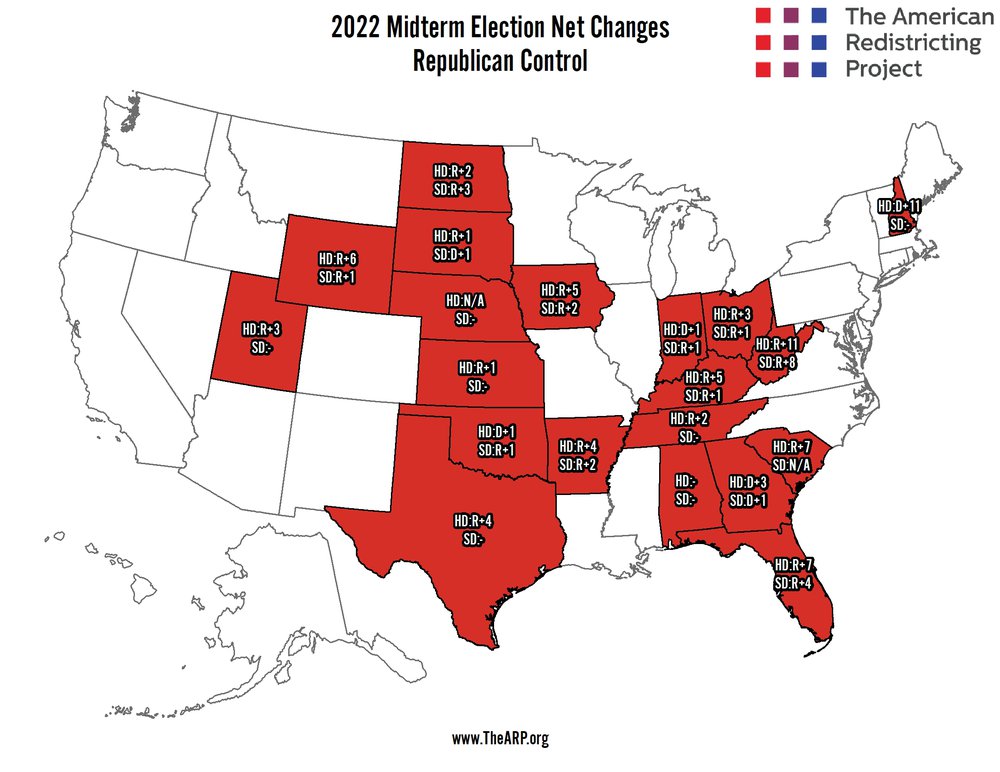
Republicans, like Democrats, saw mixed results from legislative redistricting. Republicans lost seats in the South Dakota Senate, the Oklahoma House, the Indiana House, the New Hampshire House, and both chambers of the Georgia General Assembly; had status-quo results or marginal gains in most chambers; and won significantly larger majorities in only a few places – most notably both chambers in West Virginia, Florida, North Dakota, Iowa, and Arkansas, and lower chambers in Utah, Texas, Wyoming, South Carolina, and Kentucky.
